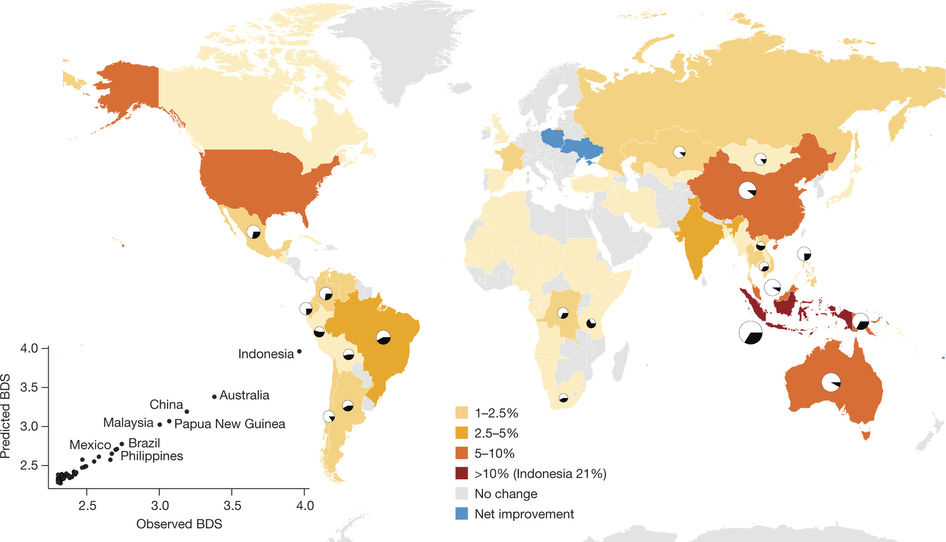“How do they survive?” This is the question I kept asking myself over and over as I sat sipping my mint tea on the clay floor of an Amazigh cave in the Moroccan mountains. Their faces, hands, tea-kettle and even my cup were layered with dirt and soot. Outside, prevailing winds dusted the lonely peaks of the High Atlas with orange silt. I never expected to stumble across an indigenous settlement when I set out on my hike that day, let alone be invited for tea. This was by no means a fancy tea party, but it certainly was a memorable one.
Women plucked leaves from dry aromatic plants and a man filled a kettle for more tea. A toddler sat beside me and gestured to trade his clay ball for my Nikon. I felt like a fly on the wall in a National Geographic documentary.
I was on to my third cup of tea when a young man broke the silence. “Hello, do you speak English”, I heard from behind me. Dressed in traditional Amazigh clothes, this young man carrying a notepad and pen excitedly sat down beside me. He was a university student from Japan who had been living with this Amazigh family for four months to learn about their culture. Perfect! Maybe he could enlighten me as to how these people sustain their lives on this rugged mountain top - surely there was more to it than mint tea.
 |
| Mint tea, a traditional Moroccan drink and symbol of hospitality. Photography: Erin Jankovich |
The young man pointed out across the valley and said “see”. For a while, all I saw was an expanse of orange rock but eventually like a stereogram the landscape came to life. Those little black dots were goats, dozens of goats! He walked me to the trailhead and pointed at the pale green tufts across the landscape. Mint, rosemary, sage, thyme, and verbena – these aromatic plants were right beneath my nose. This dusty landscape wasn’t so dead after all. He explained that the Amazigh people have extensive knowledge of the medicinal properties of hundreds of plants that grow in the High Atlas, and women will take several hour journeys to sell herbs in the valley markets. I wanted to learn more, but I was reminded of the long trek back to Tinerhir. I said goodbye, and thanked them all for such generous hospitality.
 |
| Afternoon tea with Amazigh family. Photography: Erin Jankovich |
Morocco is dominated by a mountainous interior, bordered with rich coastal plains to the west and Sahara desert to the east. Since coming home from my trip, I have learned that this unique geography falls within the Mediterranean basin, a global biodiversity hotspot teeming with endemic flora and fauna found nowhere else on the planet (Rankou et al. 2013). Morocco alone has 879 endemic plants, the majority of which are restricted to the High Atlas region (Rankou et al., 2013).
The rich biodiversity of the High Atlas has been known to the Amazigh people for thousands of years, but only recently have researchers and scientists begun to draw their attention to this unique area. In 2015, scientists used IUCN Red List criteria to assess the status of endemic Moroccan flora and determined that many species are at risk of extinction due to climate change and habitat degradation (Rankou et al., 2015). These scientists emphasized that mountainous regions such as the High Atlas are especially sensitive to changes in climate and should be a top priority for conservationists, but so far very little research has gone into understanding the vegetation dynamics of this region.
 |
| Fresh and dry plants used for medicinal purposes found in traditional markets (image from Bouiamrine, 2017). |
Many plant species picked by the Amazigh are highly toxic and dangerous to humans if not used appropriately (Mouhajir et al., 2001). Anecdotal evidence through surveys and interviews have revealed that the Amazigh people, specifically senior women, are experts in distinguishing between medicinal herbs and continue to pass on this traditional knowledge from one generation to the next (Bouiamrine, 2017). Many Moroccans still rely on traditional medicine to maintain good health thus conservation of these endemic herbs is critical for both the lives of the Amazigh and Moroccan market economy (Bouiamrine, 2017).
 |
| An Amazigh woman journeys across rugged terrain to sell herbs in modern markets. Photography: Erin Jankovich |
I know better now that not all hotspots of biodiversity look like lush tropical jungles, but what they do have in common is an abundance of unique species that are threatened with extinction. Internationally the Mediterranean Basin has been recognized as providing significant ecosystem function and I was pleased to find that the Moroccan government has set national targets to preserve biodiversity and inventory traditional knowledge by 2020 (CBD, 2011).
Who better than the indigenous people of the High Atlas to help us understand the historical distribution of endemic plants and potential range shifts induced by climate change? Through sensitive and purposeful strategies for interaction with the Amazigh people—like the young student sharing a tea in the mountain—we may find that complimenting science with traditional ecological knowledge is the key to saving these unique landscapes.
References
Bouiamrine, E.H., Bachiri, L., Ibijbijen, J., & Nassiri, L. (2017). Use of medicinal plants in Middle Atlas of Morocco: potential health risks and indigenous knowledge in a Berber community. Journal of Medicinal Plant Studies, 5(2), 388-342.
Convention on Biological Diversity (2011). Electronic source. Retrieved from: https://www.cbd.int/countries/targets/?country=ma
Mouhajir, F., Hudson, J.B., Rejdali, M., & Towers, G.H.N. (2001). Multiple antiviral of endemic medicinal plants used by Berber peoples of Morocco. Pharmaceutical Biology, 39(5), 364-374.
Rankou, H., Culham, A., Jury, S.L., & Christenhusz M.J.M. (2013). The endemic flora of Morocco. Phytotaxa, 78 (1), 1-69.
Rankou, H., Culham, A. ,Taleb, M.S., Ouhammou, A., Martin, G., & Jury, S.L. (2015). Conservation assessments and Red Listing of the endemic Moroccan flora (monocotyledons). Botanical Journal of the Linnean Society, 177, 507-575.













